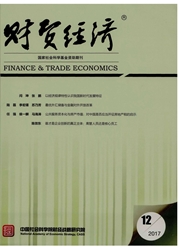

 中文摘要:
中文摘要:
本文以实际汇率为转换变量,构建了开放经济下物价波动平滑转换(STR)模型,考察了综合产出缺口指数、货币、国际利差及汇率波动对我国物价波动的多渠道传递和影响作用。本文主要结论是:首先,物价预期对当期物价的反应系数大小与实际有效汇率的变动方向相反,而产出缺口与物价波动的同向趋势会随实际有效汇率的上升而加强;其次,货币供应量增长率与物价波动的滞后变动具有时差同向关联,国际利差变动对物价波动的作用方向呈现非线性特征,但其资本引导效率的下降反映了国内利率工具应用策略的独立性困境;最后,实际汇率变动率主要通过资本渠道体现对物价波动的反向关联效应,利率和汇率的相互依托也发挥着重要作用。
 英文摘要:
英文摘要:
In this paper, we build an open-economy price-level fluctuating smooth transition regression (STR)model with real effective exchange rate(REER)as the transition variable, in order to investigate influence and channel effects of comprehensive output gap index(COGI), monetary factor, international interest rate spread(IIRS)and REER. The conclusions are as follows. First, the expected-price-level coefficient decreases when REER increases, and vice versa. Second, increase rates of money supply and lagged price level have time-difference correlation, as well as nonlinear traits of IIRS on price fluctuation, but the insufficiency of IIRS capital introducing reflects that China's domestic interest rate policy has an independence problem. Third, the negative correlation of REER with price level is mainly based on capital channel effect, besides dependences between interest rate and exchange rate are also playing an important role.
 同期刊论文项目
同期刊论文项目
 同项目期刊论文
同项目期刊论文
 期刊信息
期刊信息
